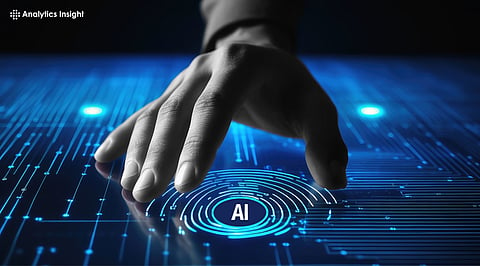

AI tools are accelerating the analysis of digital evidence in cybercrime investigations.
Automation is reducing human error, but still requires expert oversight.
The role of AI in forensics is expanding, but legal and ethical concerns persist.
Artificial intelligence is changing different fields, including digital forensics. Law enforcement, cybersecurity teams, and private investigators now rely on AI tools to manage large volumes of digital evidence.
The increasing prevalence of digital devices, such as smartphones, hard drives, cloud storage, and applications, has complicated and extended the forensic investigation process. While artificial intelligence offers assistance in accelerating these investigations, questions persist regarding its accuracy, potential biases, and governance.
With the increase in crimes involving digital technology, experts are faced with large amounts of data. Going through emails, logs, or videos manually takes a significant amount of time. Now, artificial intelligence programs can help expedite this process.
Programs can examine files, identify key clues, and even detect patterns. Machine learning can train computers to detect suspicious activities, track online addresses, and flag malicious content. This makes the work easier and gives investigators more time to handle cases.
AI can also sometimes recover deleted files or assemble timelines from disparate data sources.
Also Read: How Accurate is Artificial Intelligence in Predicting Cryptocurrency Prices?
AI systems can handle large datasets quickly, which is more efficient than traditional forensic methods.
Forensic work requires sharp eyes to spot the subtle clues that matter. However, even the most diligent individuals can overlook details when manually reviewing evidence. AI can help here, acting like a tireless assistant that doesn't miss anything and isn't biased.
Pattern detection can identify trends or anomalies that people might overlook. Additionally, software can run multiple tests and rebuilds, which makes the proof more credible. When used correctly, this helps ensure that things are in order when presented in court.
Although AI has its advantages, relying too heavily on it can pose problems. AI systems are only as good as the data and logic on which they are based. Bad training data or incorrect code can lead to mistakes in its decisions. False positives or threats that are missed can significantly impact the outcome of a case.
Vigilance remains important. Researchers need to validate their findings, probe anomalies, and consider the broader context. Ethical issues also merit consideration, for instance, systems that encroach on privacy or misuse sensitive information.
Legal groups often require a clear explanation of how AI arrived at a decision, which is not something all systems can provide.
Digital forensics must follow the rules of law enforcement. If AI tools violate data privacy laws or fail to follow due process, the evidence can be excluded in court.
Questions about who is to blame are also growing. If someone is wrongly arrested due to a software error, who is to blame? It is a question of a person's fundamental rights and liberty.
Rather than substituting forensic experts, artificial intelligence serves as a tool, managing repeatable actions and refining methods for detailed investigations. AI can never replace humans completely.
Also Read: 10 Ways Artificial Intelligence Is Combating Climate Change
AI is transforming digital forensics by providing faster results, more accurate truth, and enhanced support for investigators. However, we must also understand what it cannot do. Questions about law, morals, and how things work continue to make it challenging to automate fully.
Digital forensics will likely utilize AI as a key tool, but not as a standalone solution. Human judgment, legal control, and moral actions will continue to shape how this technology is used to combat digital crime.
1. What role does AI play in digital forensics today?
AI helps speed up investigations by automating data analysis, evidence sorting, and pattern detection.
2. Can AI fully replace human forensic experts?
No, AI acts as a support tool; human oversight remains essential for validation and legal judgment.
3. How does AI improve the accuracy of digital investigations?
AI reduces human error by identifying hidden patterns, anomalies, and relevant files with greater consistency.
4. What are the legal risks of using AI in forensics?
If AI violates privacy laws or makes errors, the evidence may be inadmissible in court.
5. Is AI in digital forensics free from bias?
No, AI can inherit bias from flawed data, making ethical oversight and training critical.
